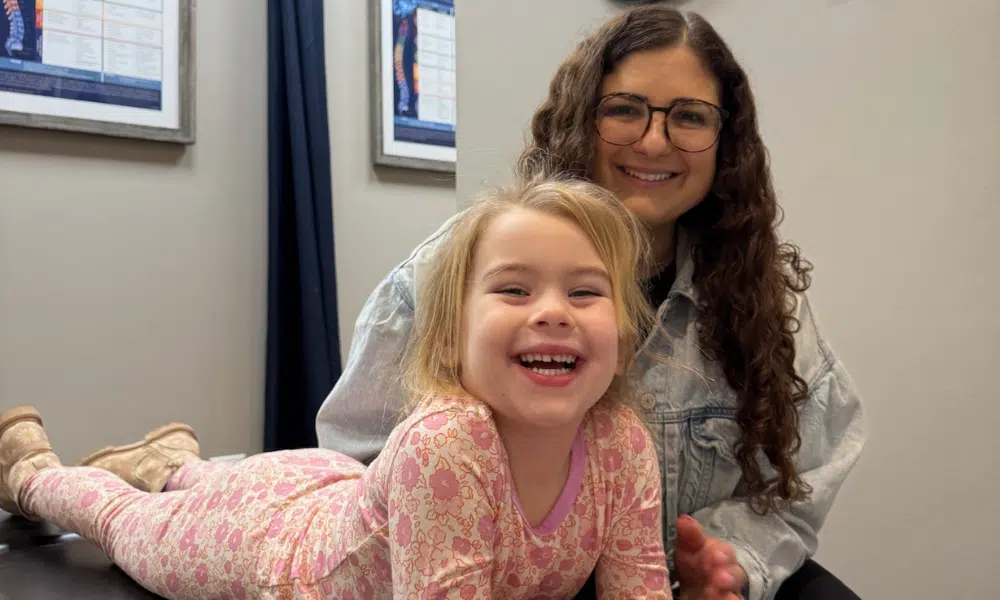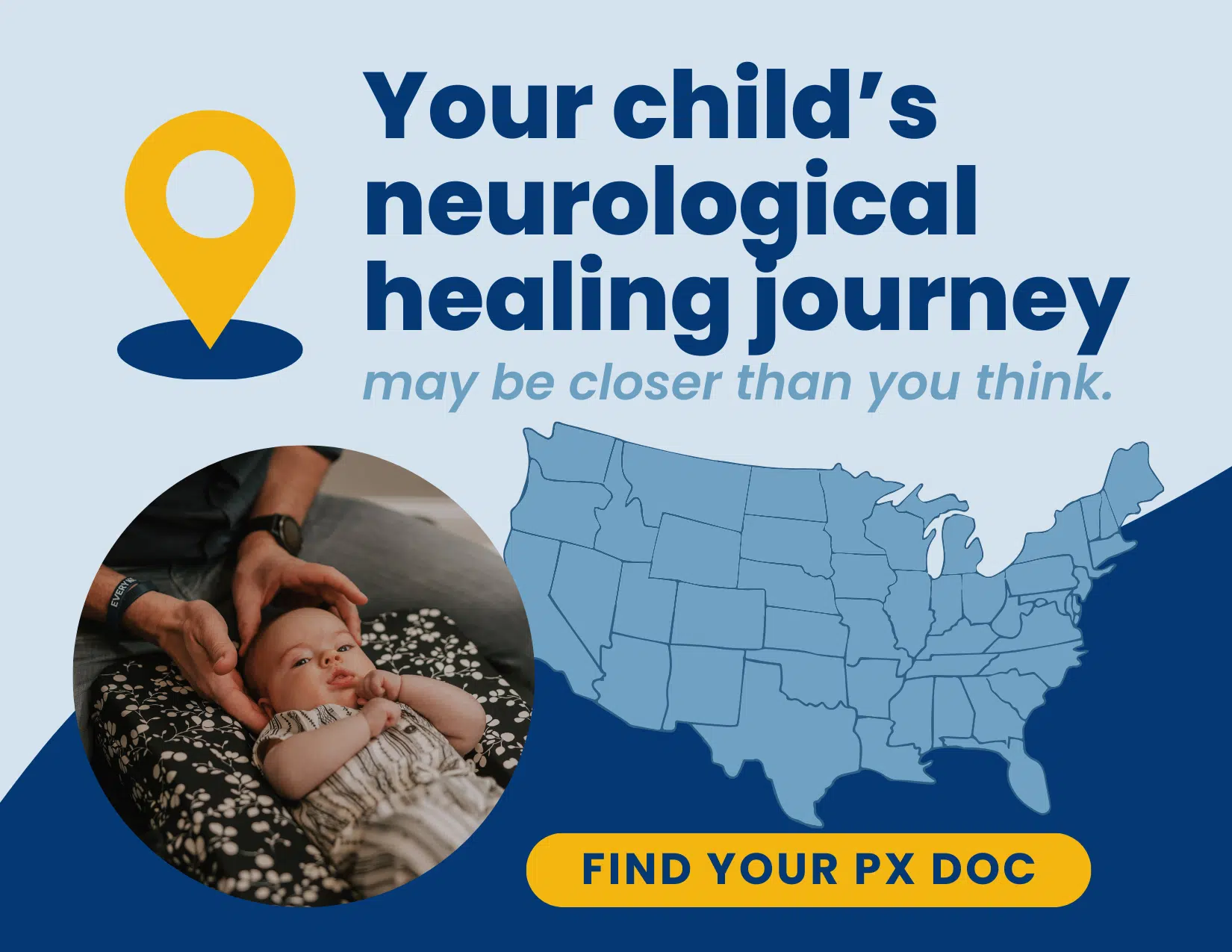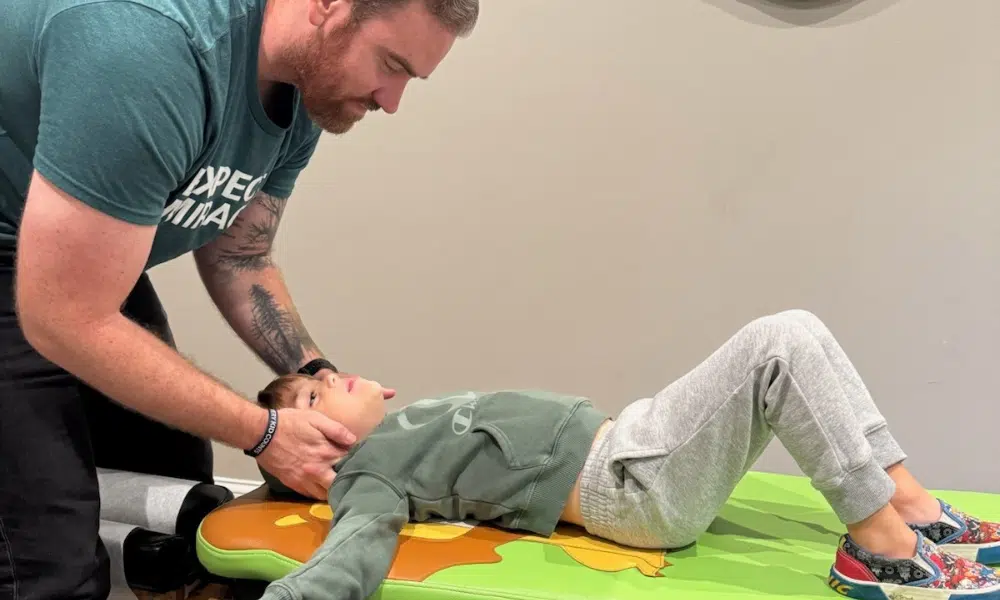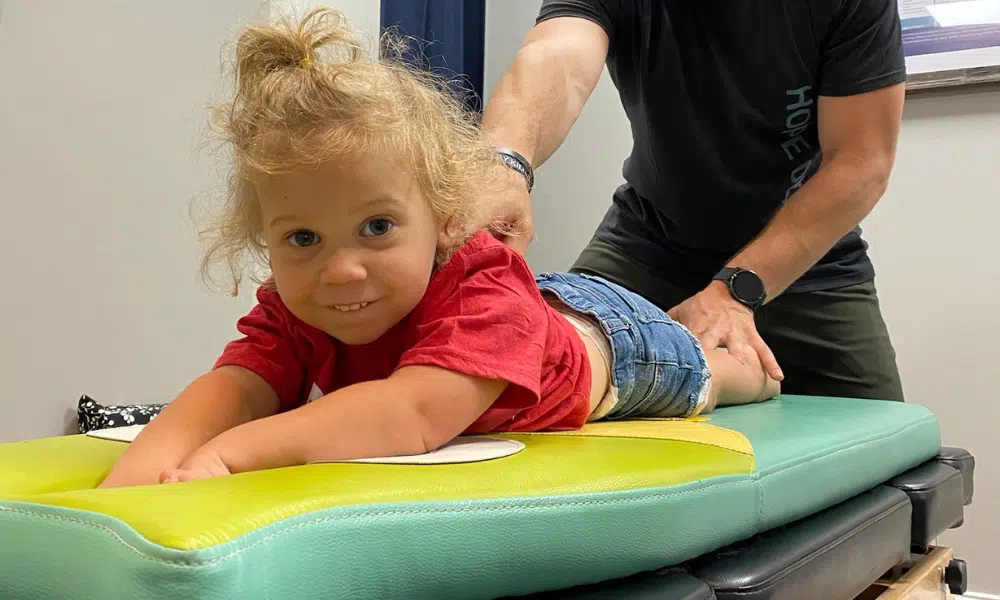Receiving an autism diagnosis for your child can be a life-changing moment filled with a whirlwind of emotions. Confusion, fear, and countless questions often arise as parents try to navigate this new reality. One of the most pressing questions on many parents’ minds is, “Where does autism come from?”
Autism, or Autism Spectrum Disorder (ASD), is a complex neurodevelopmental condition that affects communication, social interaction, and behavior. Additionally, we now know that autism-related challenges also include significant issues within the gut and digestive health, immune system function, and the modulation of inflammation, sensori-motor planning and function, and so much more within not just the brain, but the body itself.
Over the past few decades, the prevalence of autism diagnoses has increased significantly, with current estimates suggesting that 1 in 31 children in the United States is on the autism spectrum. This rise in diagnoses has fueled a growing interest in understanding the origins of autism.
While the exact causes of autism remain elusive, researchers and, most importantly, practicing clinicians have made significant strides in unraveling the complex web of factors that contribute to its development. The consensus among experts is that there is no single cause of autism. Instead, the condition likely arises from a complex interplay of genetic predispositions and environmental influences, with a strong emphasis on the latter way more than the former.
In this article, we will explore the current understanding of autism’s causes, delving into the genetic and environmental factors that may increase the risk of developing the condition. By shedding light on the origins of autism, we hope to provide families with the knowledge and resources they need to better support their children and navigate the challenges that autism can bring.
Does Autism Run in Families?
One of the strongest indicators that autism has a genetic component is that it often runs in families. When one child is diagnosed, their siblings are more likely to also be on the spectrum compared to the general population.
Still, there’s no single “autism gene.” Research shows that hundreds of genes (likely 400–1,000) may contribute, interacting with one another and with environmental factors that influence brain development. Plus, we understand that genetics are strongly influenced by our environment, which significantly dictates which genes will be fully activated or expressed, and which will not.
Traditional medical researchers often study genetics without considering the impact of the environment – a crucial mistake, especially with neurodevelopmental conditions like autism. The early stages of development are incredibly sensitive, meaning environmental stressors and triggers can have a far greater impact than later in life.
The field of study that helps determine how our environment influences our genetic expression is called epigenetics, and no discussion of autism and genetics should be had without including epigenetics and environmental factors in a significant way.
Genetic influences can take a few forms:
- Inherited variants: Certain genes can be passed from parent to child, but having them doesn’t guarantee a diagnosis.
- De novo mutations: Some gene changes occur spontaneously before conception, altering brain development.
- Rare variants: A handful of uncommon gene changes are found more often in individuals with autism, but each explains only a small fraction of cases.
Genetic testing can sometimes identify these variants and guide care, though it cannot diagnose autism or predict outcomes. It also raises questions around accuracy, interpretation, and emotional impact.
Ultimately, genetics are only part of the picture – environmental and developmental factors play a major role in how these genetic predispositions express themselves.
Environmental Risk Factors
While genetic factors play a role in the development of autism in some cases, they do not act alone, and the environment is a major player, whether genetics are involved or not. Various environmental influences, particularly those that occur during critical periods of fetal development and early childhood, may also contribute to the risk of autism.
At PX Docs, we refer to the sequential combination of all these factors as “The Perfect Storm.” In short, this neurological storm that can often disrupt and delay optimal development can be summarized into three (3) main categories: fertility and maternal distress, birth trauma, and excessive exposure to toxins, antibiotics, medications, and other medical interventions early on during those critical and sensitive periods of development.
Fertility + Prenatal Complications or Distress
Fertility challenges and interventions have been linked in research to an increased risk of autism, largely due to the heightened stress and medicalization that accompany them. Assisted reproductive technologies (ART) such as IVF and fertility medications can alter hormonal balance, increase oxidative and inflammatory stress, and sometimes lead to higher rates of preterm birth or birth complications – all of which place added strain on early neurological development.
While these interventions don’t cause autism directly, they often contribute to the Perfect Storm of prenatal stressors that can disrupt normal brain and nervous system maturation.
Another area of focus has been prenatal factors – environmental exposures and maternal health conditions during pregnancy. Overall, quite a few studies have linked maternal distress to Autism Spectrum Disorder and other chronic illnesses or neurodevelopmental conditions in children.
Put simply, we’ve turned so much of prenatal care into almost a “diagnosed condition” that needs to be medically treated instead of celebrated and supported. Life is stressful enough as it is for women today; now add in all the pressure and distress the medical world puts on them as they go through pregnancy, and we start to see the first portion of the “Perfect Storm” story unfold.
Looking into other factors associated with this critical period of fetal development, studies have linked a higher likelihood of autism to maternal infections during pregnancy, such as rubella or cytomegalovirus. Exposure to air pollution and heavy metals in utero has also been associated with an increased risk. Additionally, maternal health conditions such as obesity and diabetes identified autism risk factors as more than four times greater.
The perinatal and neonatal periods, which encompass the time immediately before, during, and after birth, have also been investigated for their potential role in autism development. Factors that have been linked to an increased risk include:
- Premature birth (before 37 weeks of gestation)
- Low birth weight (less than 5 pounds, 8 ounces)
- Birth complications such as breech presentation, prolonged labor, or other interventions
- Oxygen deprivation during delivery
Exploring the Role of Birth Interventions & Trauma
Birth interventions and trauma play a significant role in many cases of autism, not as the sole cause, but as a powerful trigger that can disrupt early neurological development. Procedures such as forceps or vacuum delivery, C-sections, labor induction, or birth complications can place high levels of physical and physiological stress on a baby’s nervous system.
This can lead to subluxation, vagus nerve dysfunction, and altered sensory and motor input during the most critical period of brain and nervous system formation. When combined with other stressors – such as prenatal distress or early toxin exposure – these birth-related challenges can set the stage for the neurological imbalance and dysautonomia often seen in children on the spectrum.
Environmental Toxins & Overuse of Medications
Toxin overload and antibiotic overuse are two major contributors to the growing rates of autism and other neurodevelopmental challenges. When a child’s body is exposed to repeated rounds of antibiotics, environmental toxins, or chemical stressors, it can overwhelm the gut, immune system, and detox pathways. This overload disrupts the gut-brain connection, weakens immune regulation, and increases inflammation – all of which place added stress on an already sensitive nervous system.
For many children, especially those who’ve also experienced prenatal or birth stress, these compounding toxic and inflammatory triggers can further dysregulate the brain and contribute to the neurological imbalance often seen in autism.
Finally, parental factors, particularly the age of the parents at the time of conception, have also been implicated. Advanced paternal age (over 40 years old) and advanced maternal age (over 35 years old) have both been associated with a higher likelihood of having a child with autism.
It is crucial to note that these environmental “Perfect Storm” factors are best understood as risk factors rather than definitive causes. Not everyone exposed to these influences will develop autism, and conversely, many individuals with autism may not have experienced any known environmental risk factors. The relationship between environment and autism is complex and likely involves an intricate interplay with an individual’s genetic predispositions and epigenetic potential.
As researchers continue to investigate the environmental piece of the autism puzzle, it is essential to approach this information with a balanced perspective. While understanding potential risk factors can guide preventive efforts and inform public health policies, it should not be used to place blame or stigma on parents.
Ultimately, the goal of this autism research and discussion of environmental risk factors is to provide families with the knowledge and resources they need to make informed decisions, know what root causes and triggers may still need to be addressed, and to proactively support the healthy development of all children.
The Interplay of Genes and Environment
As we’ve seen, both genetic and environmental factors play a role in the development of autism. However, these influences do not operate in isolation; rather, they interact in complex and dynamic ways to shape the likelihood and presentation of the condition.
Researchers now believe that genetic factors create a foundation of susceptibility, while environmental triggers influence if and how autism develops and manifests. In other words, certain genetic profiles may make an individual more vulnerable to the effects of environmental risk factors. This interplay could help explain why not everyone exposed to a given environmental factor develops autism, and why the presentation of autism can vary so widely from person to person.
Digging even deeper, this is why the sequence of the Perfect Storm scientific theory is such an important part to fully understand. When the fertility, pregnancy, or birth process is filled with stress and intervention, it can overload the baby’s nervous system. This often leads to tension, imbalance, and a “stuck” stress response, which makes it harder for the nervous system to adapt, grow, and develop as it’s meant to.
As mentioned above, one key way the environment can influence genetic expression is through epigenetics, which involves modifications to gene expression without changing the DNA sequence. Factors like diet, stress, and toxins can lead to these changes, potentially affecting the expression of autism-related genes and how the condition develops.
The exact nature of these gene-environment interactions in autism is still an area of active investigation. Researchers are working to identify specific environmental triggers, understand how they interact with genetic susceptibilities, and pinpoint critical developmental windows when the brain and nervous system may be particularly vulnerable to these influences. This work requires large-scale, long-term studies that carefully track both genetic and environmental factors over time.
Teasing apart the intricate web of genetic and environmental influences in autism is a complex challenge, but one with significant implications. By understanding these interactions, we may be able to develop targeted interventions and support strategies based on an individual’s unique genetic and environmental risk profile. This knowledge could also inform public health efforts to minimize environmental risk factors and promote healthy neurodevelopment for all children.
Implications of Understanding Autism’s Causes
Every new discovery about what contributes to autism brings more hope for families. By better understanding how both genetics and environment affect development, we can create earlier, more personalized ways to help kids grow, connect, and reach their full potential.
One key area we can vastly improve is helping parents spot the early signs of autism and gain access to care interventions that focus more on the nervous system and addressing root causes, instead of reactively waiting for problems to arise and then looking to treat their symptoms. Early detection is crucial, as research consistently shows that early intervention leads to better outcomes.
By starting care programs, therapies, and support services as early as possible, we can help children with autism develop essential skills and foster their overall healthy development. Understanding autism’s causes also paves the way for more personalized, targeted interventions.
As we learn more about the role that nervous system dysregulation and dysfunction play in the development of autism, hopefully, more parents can gain access to the appropriate care for those foundational issues – Neurologically-Focused Chiropractic Care and other related movement-based integrative therapies.
It’s time to move past the “wait-and-see” and “better diagnosis” explanations and start addressing autism at its roots. By taking a personalized, neurologically-focused, whole-child approach, we can achieve real breakthroughs in healing, connection, and development.
Insights into environmental risk factors for autism highlight prevention opportunities. While genetics can’t be altered, minimizing exposure to environmental risks is possible. Public health efforts can focus on reducing air pollution, regulating pesticides, promoting maternal health, lessening the amount of birth interventions, antibiotics, medications, and other interventions given so early to so many infants and young children, and overall creating a healthier environment may help lower the incidence of autism and other neurodevelopmental conditions.
A Future of Hope, Understanding, and Full Potential
The path to getting better results and reversing the epidemic of autism and chronic health issues in children starts with a deeper and more complete understanding of the “Perfect Storm” and how those early stressors and triggers alter neurodevelopment, gut and immune function, and so forth.
Diving deeper into root causes and foundational neuroscience will help us see that every child’s story is unique, yet the pieces connect in a way that helps us understand why their nervous system developed the way it did — and most importantly, how we can help it heal.
If you’d like to take the next step in supporting your child with autism, we encourage you to visit the PX Docs directory to find a practitioner near you. As we’ve seen, autism does not have a single cause; it arises from a complex interplay of multiple factors that often show up early during the developmental journey, and in a very specific sequence.
We can shift the conversation away from merely blaming genetics and better diagnosis, and we can also fully accept, love, and support every single individual with autism while simultaneously working hard to get them the care and interventions they need to optimize their neurological function, promote healing and recovery, and vastly improve their quality of life!
Every child and individual with autism deserves a chance to reach their full potential, and every parent and provider deserves to know the whole scientific story behind autism.



![[GRID] Calming the Sensory Storm WEBINAR PX Docs Webinar](https://pxdocs.com/wp-content/uploads/2025/11/GRID-Calming-the-Sensory-Storm-WEBINAR.png.webp)


